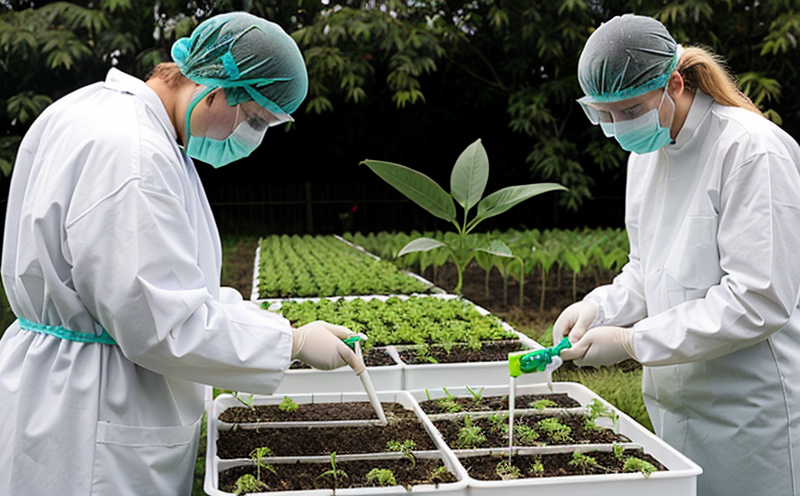LAMP Assay for Plant Pathogen Detection
The Loop-Mediated Isothermal Amplification (LAMP) assay is a powerful molecular biology tool designed specifically for the rapid detection of plant pathogens. This test can identify various pathogens including viruses, bacteria, fungi, and oomycetes that affect agricultural crops, forestry plants, and ornamental species.
LAMP works by targeting six distinct regions in the DNA or RNA sequence of the pathogen. The reaction is carried out at a constant temperature, which allows for easier automation and integration into existing laboratory workflows. This method is particularly advantageous because it requires minimal equipment and reagents, making it suitable for field applications as well.
The assay has been widely validated against standard PCR methods and provides results in just 30 to 60 minutes under optimal conditions. It also offers high specificity and sensitivity comparable to more complex techniques like next-generation sequencing (NGS), but with simpler equipment requirements.
For our clients, the LAMP assay represents a significant advancement over traditional diagnostic methods such as ELISA or microscopy due to its speed, accuracy, and ability to detect multiple pathogens simultaneously. This translates into faster decision-making processes regarding crop management practices, quarantine measures, or breeding programs aimed at pathogen resistance.
Our laboratory employs advanced LAMP protocols tailored to specific geographical locations and agricultural systems. We ensure that every test adheres strictly to international standards like ISO 15143-2 for quality assurance in plant health diagnostics.
Why It Matters
Rapid identification of plant pathogens is critical for maintaining global food security and sustainable agriculture practices. Early detection allows for prompt intervention strategies such as quarantine protocols, pesticide application, or crop rotation plans. These actions not only protect current yields but also prevent the spread of diseases to neighboring fields and regions.
- Customer Impact and Satisfaction:
- Reduces downtime associated with infected plants
- Minimizes economic losses due to disease outbreak
- Supports informed decision-making in farm management
In addition, the LAMP assay plays a crucial role in international trade by ensuring compliance with phytosanitary regulations. By providing accurate and reliable results quickly, it helps countries maintain their export markets while protecting domestic crops from invasive pathogens.
Customer Impact and Satisfaction
- Reduction in Downtime: Quick diagnosis leads to faster implementation of mitigation measures, thereby reducing the time plants spend under quarantine or treatment.
- Economic Stability: Early detection prevents significant financial losses by minimizing crop damage and spoilage.
- Informed Decision-Making: Accurate information facilitates strategic planning for pest control, breeding programs, and resource allocation.
Clients can expect highly confident results from our LAMP assays. We use state-of-the-art equipment and follow stringent quality assurance protocols to deliver consistent performance every time. Our experienced team ensures that each sample is handled carefully throughout the testing process, ensuring accurate identification of pathogens.
International Acceptance and Recognition
The LAMP assay has gained widespread acceptance across many countries as a reliable method for plant pathogen detection. It is recognized by several international organizations including the World Organization for Animal Health (OIE) and the International Plant Protection Convention (IPPC).
In Europe, the European Commission recommends the use of LAMP for certain pathogens due to its efficiency and ease of implementation in various settings. Similarly, the United States Department of Agriculture (USDA) has endorsed this technique for specific applications within American agriculture.
Our laboratory adheres strictly to these recognized standards when performing LAMP tests. By doing so, we ensure that our results are internationally comparable and accepted by regulatory bodies worldwide.





